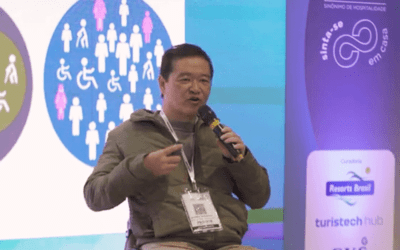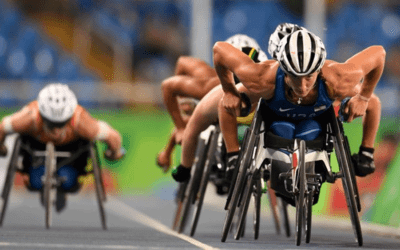
Do-it-yourself airports could turn travel around for disabled fliers
Here’s another possible upside to do-it-yourself airports: Disabled people will begin to like traveling again.
We recently wrote that airports are replacing humans with robots in an effort to streamline check-in processes.
Consumer advocates like Christopher Elliott have said “there’s not enough automation” and that the self-check kiosks are a good thing for travelers’ sanity (and their wallets). But smelling a job-killer, airline-employee unions have argued that it’s the last thing fliers want.
“Clearly, it’s not something passengers are clamoring for,” Frank Larkin, a spokesman for the International Association of Machinists and Aerospace workers, told the Journal. “More technology, fewer people? I don’t think so.”
Too bad he’s in the minority. There are plenty of inefficiencies with manned check-ins, one of them being that disabled people have a ridiculously hard time boarding planes.
According to CNN, their frustrations run the gamut from having wheelchairs damaged to missing flight connections and losing access to airplane restrooms. One disabled man said he was stranded on the tarmac.
So how will DIY airports change the game? Brett Snyder, president of Cranky Concierge and blogger at The Cranky Flier, believes agents will be less distracted if they’re not dealing with minutiae like changing seats and checking bags for regular travelers.
“For self-boarding, it just frees up agents to be able to do more important work,” he said over email.
And it won’t kill many jobs.
“Some will say (self-boarding) will simply reduce staffing further, but with many gates already staffed by only one person, it would be hard to reduce by a ton,” Snyder said.
So things won’t be fully automated, just enough to make life easier.
As Elliott pointed out, “there will always be passengers who need a human touch. So maybe folks who can’t use a computer or who have some trouble with a bar scanner.”
Or people who are bound to a wheelchair or are visually impaired.
Whoever these disabled people are, it’ll be nice to know they’re finally getting the attention they deserve.
Source: Business Insider
Compartilhe
Use os ícones flutuantes na borda lateral esquerda desta página
Siga-nos!
Envolva-se em nosso conteúdo, seus comentários são bem-vindos!
Artigos relacionados
Acessibilidade no ESG. Equipotel aborda o tema para o turismo.
Acessibilidade no ESG, para o mercado do turismo. Equipotel aborda a importância da inclusão da pessoa com deficiência.
Morte Sobre Rodas. Filme inclusivo foi candidato ao Oscar.
Morte Sobre Rodas. Dois protagonistas do filme, são pessoas com deficiência, um usuário de cadeira de rodas e outro com paralisia cerebral.
Paralimpíada de Paris 2024. A deficiência não é um limite.
Paralimpíada de Paris 2024. A cidade luz sedia o maior evento esportivo do mundo para as pessoas com deficiência.






0 comentários